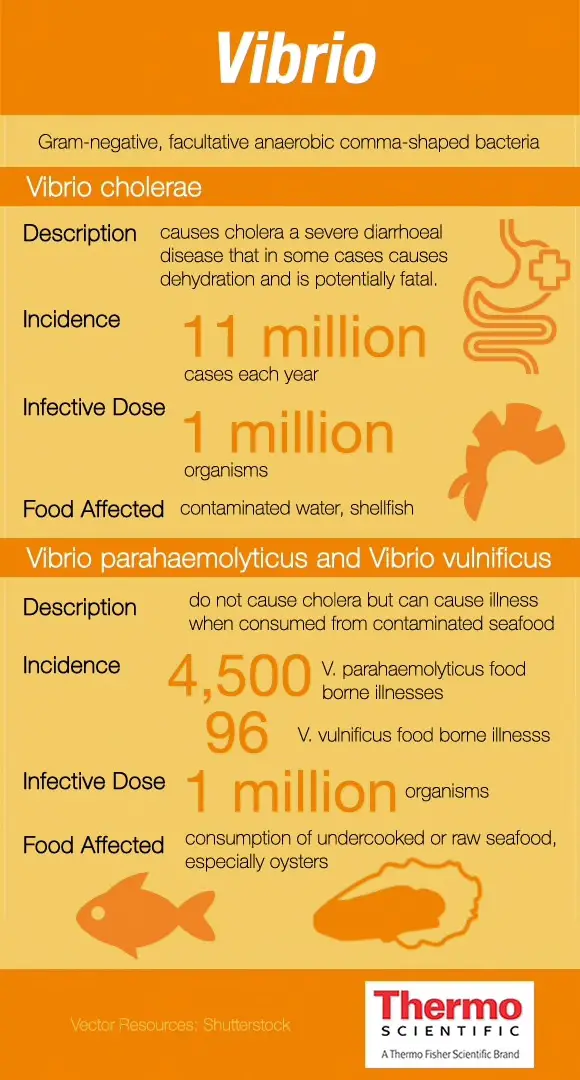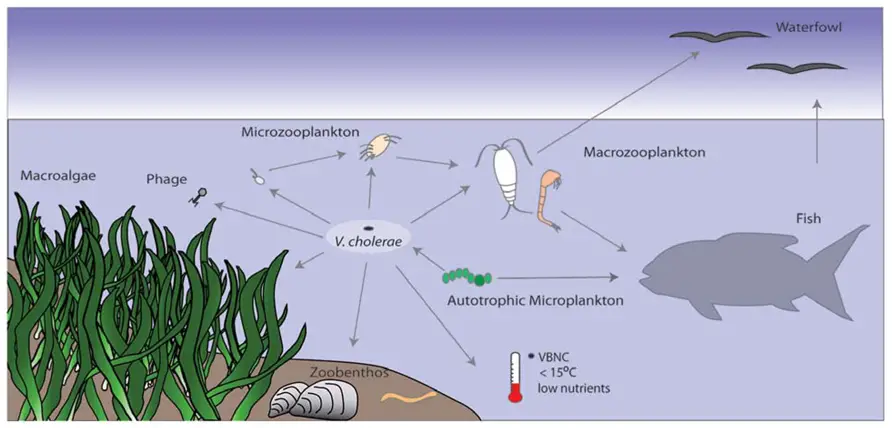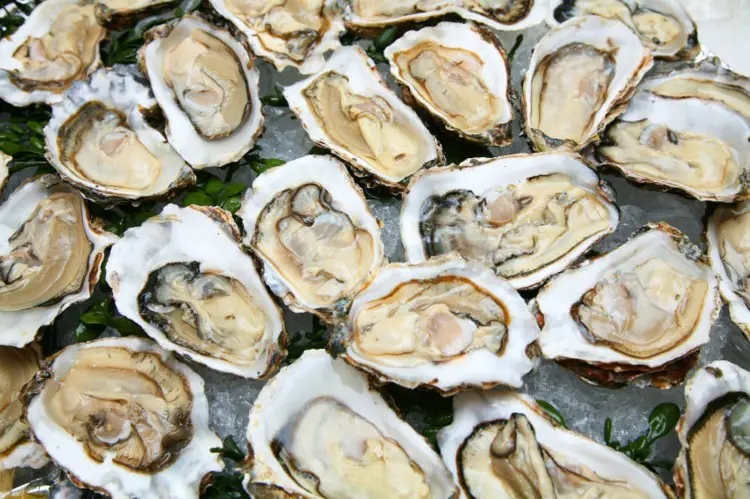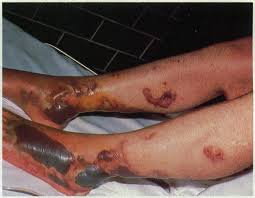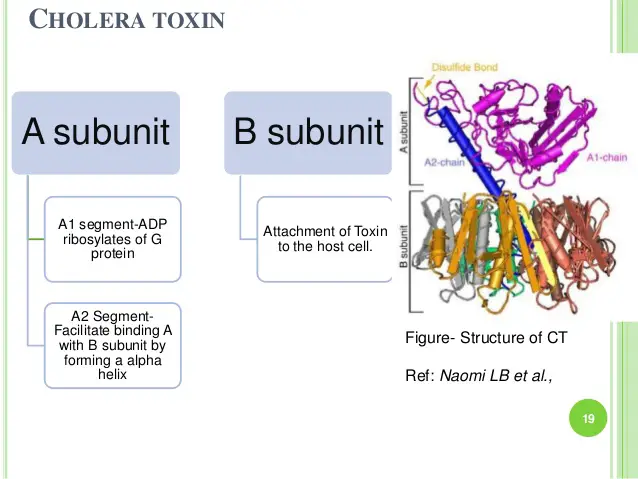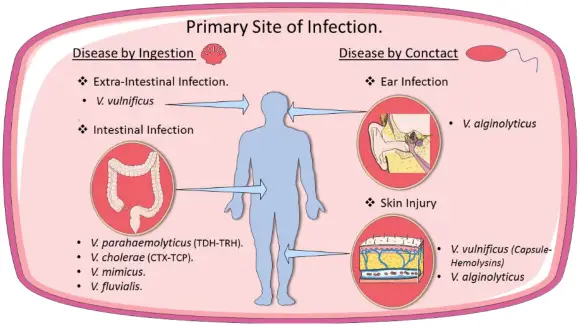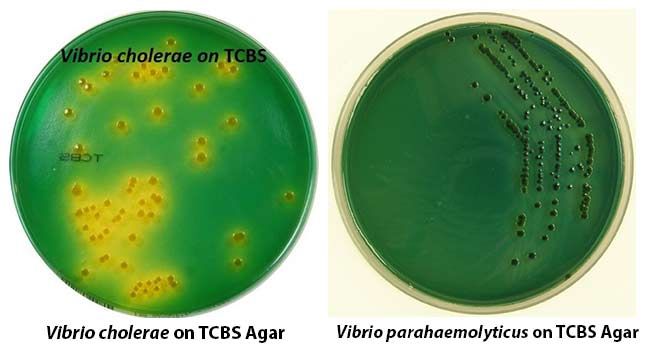Vibrio is a key genus of food and waterborne pathogens that cause millions of cases of disease each year across the globe. This post is based on a report I wrote in 1998 – it is revised, edited, added to, and here it is. Happy reading!
The genus Vibrio comprises a number of species but only three are really of food or waterborne significance. These are V. cholera, V. parahaemolyticus and V. vulnificus. Vibrio organisms are Gram negative curved rods (Figure 1) which are facultatively anaerobic and most often motile by a polar flagellum. They are common environmental organisms, although this varies between species. V. parahaemolyticus has the widest growth limits for all the major growth parameters of salt, temperature, water activity and pH. All species prefer slightly alkaline conditions and sodium chloride stimulates growth.

Vibrios are widespread in the aquatic environment worldwide, although they predominate in marine waters, especially in estuarine habitats. From Figure 2, one can see that vibrios are an integral part of the aquatic ecosystem in which they inhabit, with interactions between organisms in different kingdoms and at different trophic levels. Their numbers fluctuate seasonally, with increases seen during water months. However, their numbers are regarded as constantly being high. From this, it has been suggested that all seafood should be regarded as being potentially contaminated with Vibrio spp.
V. cholera is endemic in many tropical countries where high numbers of cases are continually recorded. Most cases are reported on the African continent, with spikes in reported cases on a global basis typically due to extreme numbers of cases reported in the Americas in those years, such between 1991 and 1993 and in 2010 and 2011 (Figure 3). Cholera is rarely reported in advanced economy countries, with Australia for example, reporting an average of three cases annually between 1991 and 2019. In so-called “developed countries”, V. parahaemolyticus is more common. This species is especially widespread in Japan where it causes the most cases of foodborne disease – a reflection of the dietary habits of the Japanese which includes raw seafood consumption.
By far the most common food implicated in transmission of Vibrios is seafood. This is especially the case with V. parahaemolyticus and V. vulnificus. Shellfish, such as oysters (Figure 4), are amongst the most common seafood found as the vehicle of transmission. With V. cholera, food is much less important as it is primarily waterborne. Causes of food borne transmission have been reported, presumably from use of contaminated water in food preparation, such as in rice or salads.
Disease symptoms vary considerably, from life threatening cholera (V. cholera) to self-limiting gastroenteritis (V. paraheomlyticus). With V. vulnificus, a septicaemia (Figure 5) is common.
Hoffmann TJ, Nelson B, Darouiche R, Rosen T. Vibrio vulnificus Septicemia. Arch Intern Med.1988;148(8):1825–1827. doi:10.1001/archinte.1988.00380080097026
The main toxin of the genus is the cholera toxin (CT) (Figure 6). It attaches to the intestine via the toxin coregulated plus (TCP), another major virulence factor. Other toxins include a Shiga-Like toxin reported for some isolates of V. parahaemolyticus.
Vibrio disease is most often intestinal, especially that which results from ingestion of the infectious bacteria (Figure 7). However, as seen in Figure 5, extra-intestinal sites of infection are possible with V. vulnificus and are in fact typical. Cholera is essentially an intoxication which relies heavily on the CT. The bacterium attaches to the intestinal epithelium causing an osmotic imbalance via the CT which results in massive fluid loss (up to 20 litres per day) and rice water stools, characteristic of cholera. V. parahaemolyticus is somewhat invasive, but not as much as V. vulnificus which spends little time in the gastrointestinal tract and migrates to the blood. V. parahaemolyticus pathogenesis is possible because of a range of virulence factors – haemolysins, urease, along with secretion systems (two type III and two type VI).
Plaza, N., Castillo, D., Pérez-Reytor, D., Higuera, G., García, K., & Bastías, R. (2018). Bacteriophages in the control of pathogenic vibrios.
Electronic Journal of Biotechnology, 31, 24-33.
Methods of detection/isolation exploit the ability of Vibrios to tolerate high pH and high salt, such as TCBS agar (Figure 8).
https://microbiologyinfo.com/thiosulfate-citrate-bile-salts-sucrose-tcbs-agar-composition-principle-uses-preparation-and-colony-morphology/

